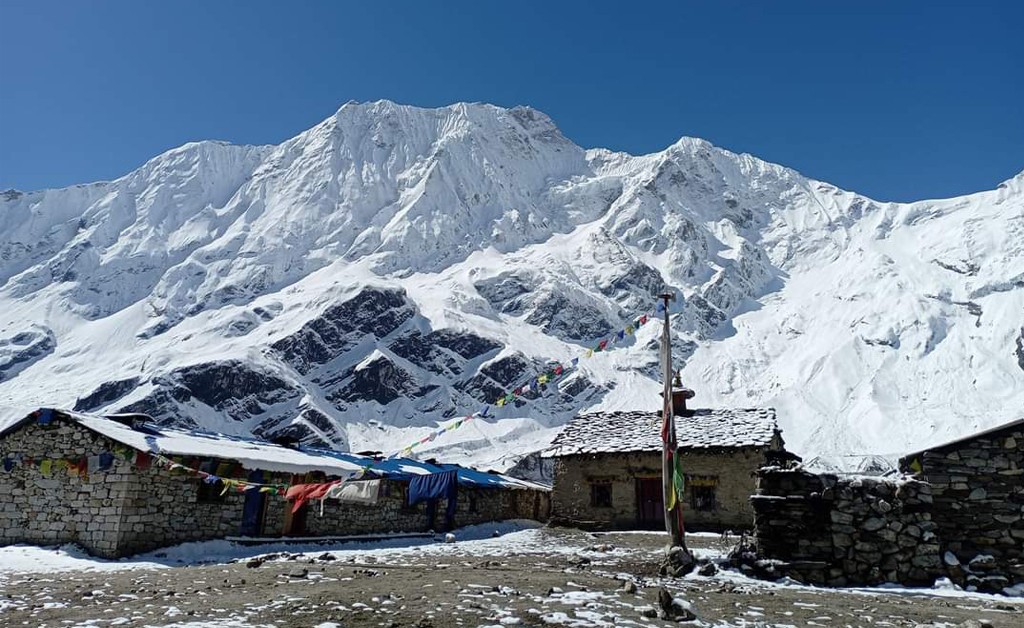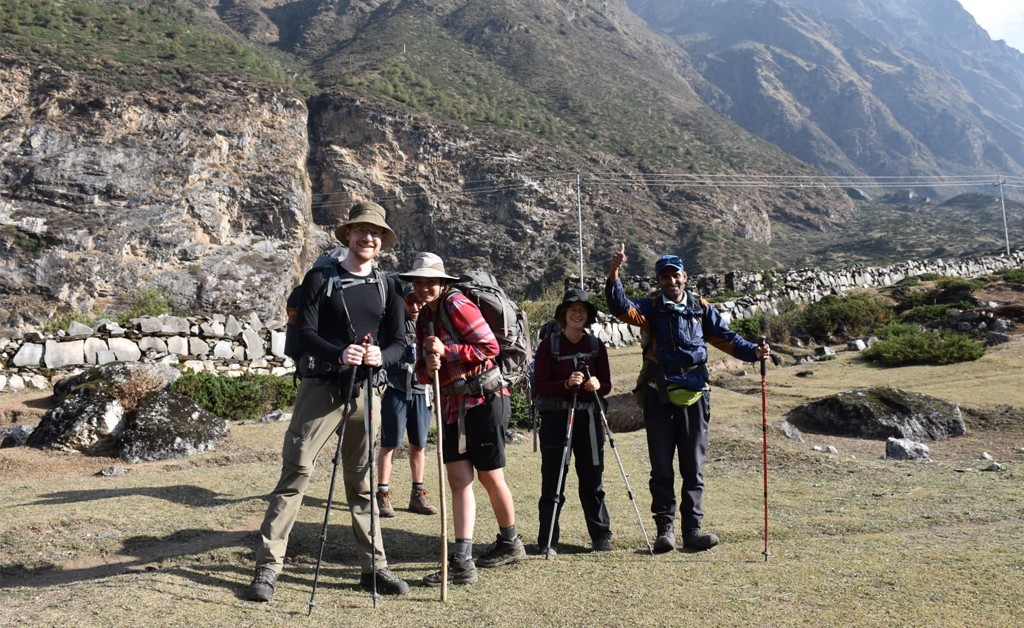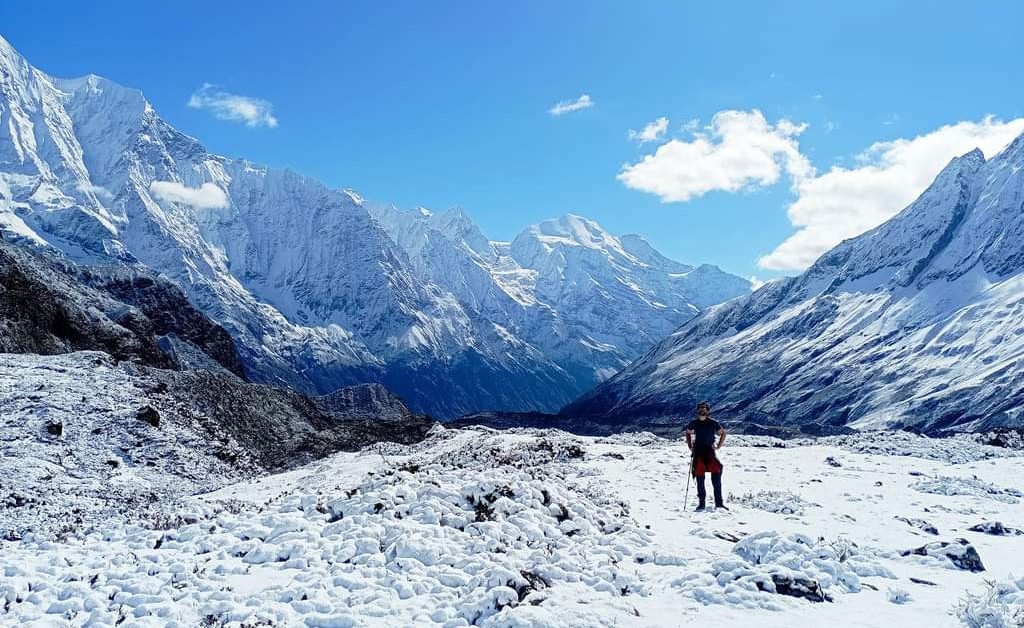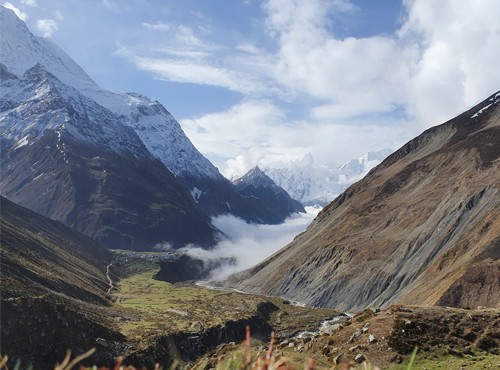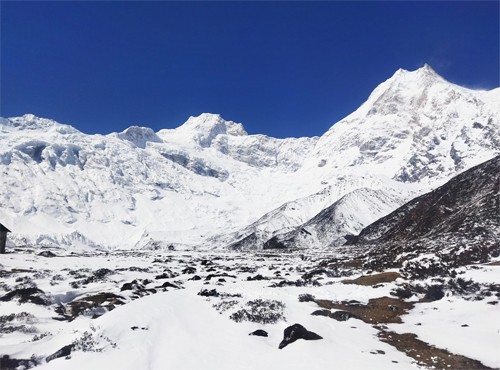One of the well-known treks in Nepal is the Manaslu Circuit and Tsum Valley Trek, which circles Mount Manaslu, an 8,000-meter summit. Tsum Valley is also included in this hike, a lesser-known location protected from excessive tourism. Tsum is one of Buddhism's "Beyul" or precious hidden valleys. Remote villages and significant historical monasteries can be found there. If you have the time, you should add the Manaslu Circuit and Tsum trek to your itinerary for your hiking vacation to the Manaslu region.
Embark on a journey through the stunning Manaslu Circuit & Tsum Valley on this 18-day trek. The path circumvents through breathtaking mountains, rural villages, and one of the most culturally rich regions of the Himalayas.
At 8,156 meters above sea level, Mount Manaslu is the eighth-highest mountain in the world. In 1956, a team made up of Nepalese and Japanese reached the summit for the first time. The breathtaking Nepal Himalayan scenery is visible while trekking near Manaslu. The mountains of Cheo Himal, Himlung Himal, and Himal Chuli may be seen magnificently from Larkya La.
In terms of scenery and terrain, the Manaslu Circuit and Tsum Valley Trek are comparable to the Half Annapurna Circuit in the West. A full camping expedition is no longer required since there are currently several teahouses and hotels in the region. Tsum Valley, situated northeast of Manaslu, is becoming a popular trekking site. Together these treks take you to the Tsum basin in the western portion of Gorkha, where you can experience both natural and cultural attractions.
Trekking in the Manaslu region has been accessible since 1992. This trek takes you through a restricted region and thus requires a special permit which increases the cost to enter. Other stringent regulations, such as the minimum requirement of 2 trekkers in a group (excluding the guide & porter) and making the arrangements through a certified Nepali trekking company limit the number of tourists who visit the area.
Manaslu Circuit and Tsum Valley Trek Route
The Manaslu trip begins from Soti Khola village, a few hours up the valley near the settlement of Arughat. The path winds through bamboo forests within the narrow Budhi Gandaki valley. At Deng village, we rejoined the Manaslu Circuit after our trip to Tsum Valley. We travel to the Nupri region, which is home to Tibetan immigrants, from the village of Lho. Just like in the Tsum, there are monasteries, Mani walls, and bright Buddhist prayer flags.
We spend a night at Samagaun and two nights at Samdo villages for essential acclimatization. We can travel by foot from Samagaun to Manaslu Base Camp. A scenic trail leads from Samdo to Tibet, where blue sheep are frequently found. We begin the approach to the Larkya La pass after Samdo Hamlet. Although no prior mountaineering experience is necessary, the Larke La Pass day is hard.
Around eight hours from Kathmandu, we begin our Manaslu Circuit and Tsum Valley Trek with a mesmerizing drive through the lush hills and along the banks of rivers to Machha Khola. As we continue our ascent to Lokpa via Jagat, we travel through rhododendrons & pine forests. Forests, terraced farmland, and the gushing Budhi Gandaki River are all covered by the routes. The Manaslu trail will thereafter be abandoned when we enter the Tsum, a secret valley. The long Manaslu journey is rewarded with the rich Tibetan culture and tradition of Tsum Valley. The path retains Mani walls and several prayer flags. The primary attraction of this walk is its abundance of flora and fauna, monasteries, Tibetan-style living, countless waterfalls, and towering snow peaks. In this trek, we will stop at Gumba Lungdang, Mu Gompa, Pungen Gompa, and Rui La Pass (Tibetan border) on this trek. We walk through Sama, Samdo, Larke La Pass, and a side trip to Rui La Pass near the Tibet border and then complete our trek by arriving at Dharapani. We will either travel back to Kathmandu from Dharapani or to Pokhara.
Best Time for Manaslu Circuit Tsum Valley Trek
The Manaslu Circuit Tsum Valley Trek is best enjoyed during the spring (March, April, and May) and autumn (September, October, and November) seasons. These months offer the most favorable weather conditions and ensure a memorable trekking experience.
Spring (March, April, and May):
- Spring brings blooming rhododendrons and other wildflowers, painting the landscape with vibrant colors.
- The weather is generally stable, with mild temperatures and clear skies, providing excellent visibility of the surrounding peaks.
- Longer daylight hours allow for more comfortable and enjoyable trekking days.
Autumn (September, October, and November):
- Autumn offers clear skies and stable weather conditions, making it ideal for trekking.
- The stunning views of the snow-capped peaks against the clear blue skies are simply breathtaking.
- The temperatures are moderate, and there is minimal precipitation, ensuring pleasant hiking conditions.
Both seasons provide an opportunity to experience the cultural richness of the region, with encounters with local communities and festivals along the way. Ultimately, the choice between spring and autumn depends on your preferences regarding scenery, weather, and cultural experiences.
Likewise, you may also consider Trekking routes like Everest Base Camp Trek, Kanchenjunga Circuit Trek, Annapurna Circuit Trek, and many other packages.
